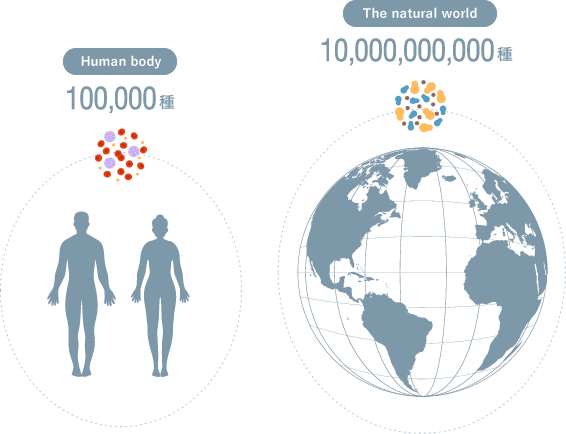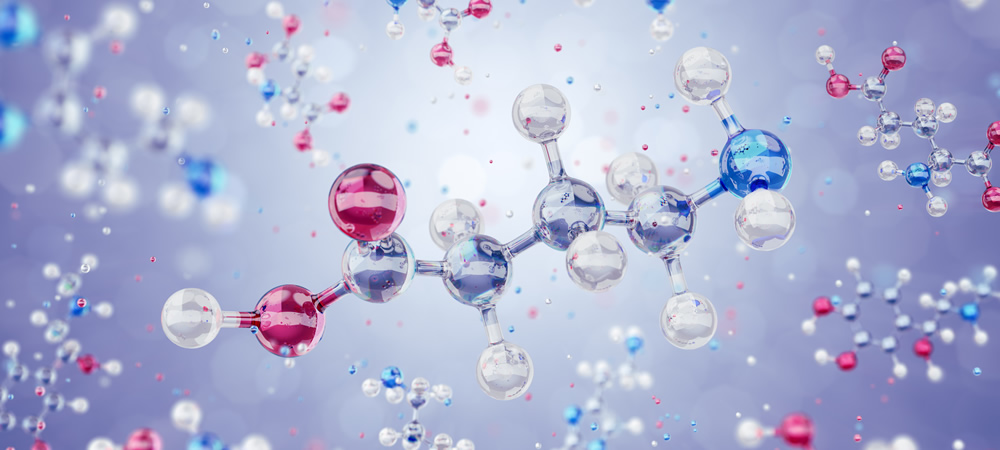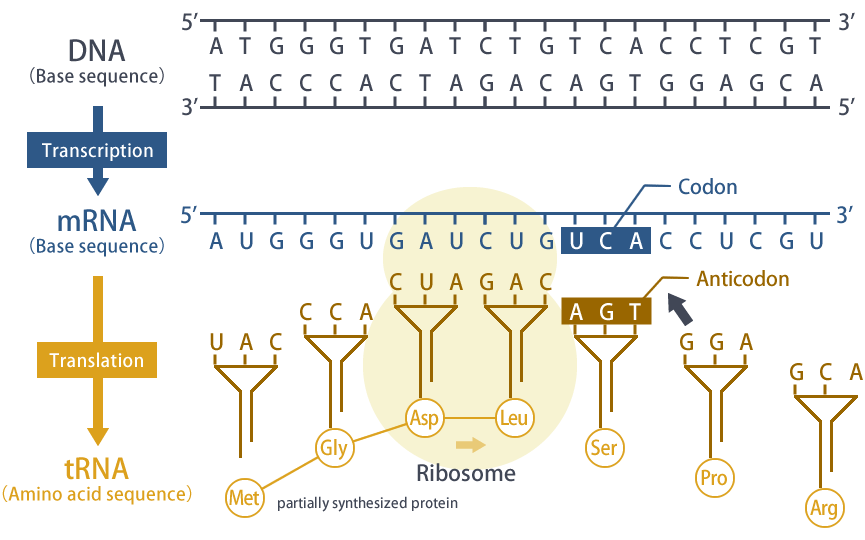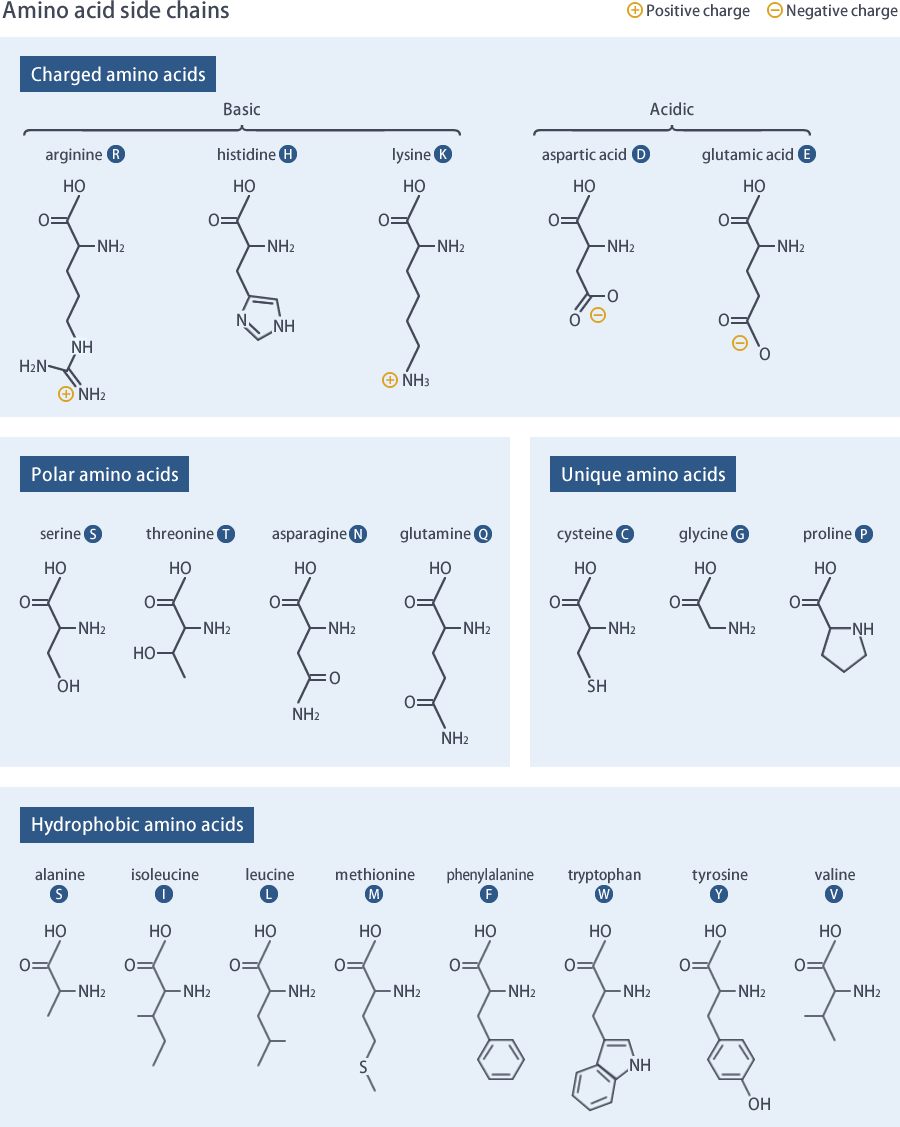About
03

About01.
What is protein?
About02.
Why is the study of proteins important?
About03.
Protein structure determination
About04.
Proteins around us
We cannot live without protein.
Let's talk a little bit about protein and how it works.
What do you think of when you hear the word protein?
Perhaps meat or fish? You may know that nails, hair and skin are made of protein. Along with carbohydrates and fats, protein is one of the three major nutrients essential for maintaining our life.
Why can't we live without protein? Collagen is a major structural protein found in skin, while hemoglobin is a protein carrying oxygen in blood. These are just small examples of the function of protein. Proteins are responsible for every aspect of life. Proteins can sense motion, light, taste and smell, and then convey such information to other parts of the body. Moreover, proteins are an essential component of the immune system that protects your body against pathogens. Proteins even synthesize DNA, which bears genetic information.
Proteins are involved in many natural phenomena, and viruses causing infections such as influenza, Ebola, dengue fever, and AIDS have shells made of protein. Proteins are also involved in the illumination of fireflies (synonymous with Japanese summer) and photosynthesis-the process in which plants produce sugars and generate oxygen.
As you read above, protein is an indispensable part of living activities. The human body utilizes over 100,000 kinds of proteins, and in the entire natural world the number could reach 10 billion. Every single one supports our life through its specific function.

Proteins are made up of amino acids containing mostly hydrogen, carbon, nitrogen and oxygen, as linked together in chains. The linear number and order of amino acids are coded in genes, a segment of DNA. Proteins contain 20 different amino acids classified by properties. Each protein has a defined length, component, and order of amino acids.
After many steps, proteins are synthesized in a protein production factory called a ribosome, where the information coded by genes are interpreted, and proteins are folded into a specific three-dimensional shape. Proteins are only functional after this stage. Protein synthesis does not always work at full capacity, but does adjust the synthesis rate to ensure that proteins can be produced when and where needed. Should the system run out of control or malfunctional proteins be produced, you are most likely not to remain healthy.

There are only four deoxyribonucleic acid (DNA) molecules responsible for storing genetic information. The molecules are called Adenine (A), Thymine (T), Guanine (G), and Cytosine (C), depending on which base is attached to their common part. These molecules are connected in a chain. Genetic information is stored as the sequence of bases along a nucleic acid chain. Two DNA chains form a dimer with a double helix structure where either A and T or G and C can be paired up. As a result, both DNA chains contain identical information. Either of the two chains is called a complementary strand to the other.
A sequence of DNA is often called a base sequence. Within a base sequence, three bases in a row represent one amino acid: ATG represent the amino acid methionine, GAA represents glutamic acid, etc. This system is called the genetic code and the sequence of three adjacent nucleotides is called a codon. Permutations of three out of the four bases give 64 (4x4x4) different codons. Most amino acids are encoded by multiple codons (Fig. 1).

Fig.1 Codon chart
Protein synthesis starts by copying a gene. The DNA sequence of a protein on the gene is duplicated with ribonucleic acid (RNA). This process is called transcription. There are four RNA components: A, Uracil (U), G, and C. In RNA, U takes the place of T. The transcribed RNA from the DNA blueprint, now called messenger RNA (mRNA), is transferred to the ribosome-a protein production factory.
The ribosome is a gigantic complex made up of protein and a form of RNA known as ribosomal RNA (rRNA). Another type of RNA called transfer RNA (tRNA) is also involved. An amino acid is carried by tRNA, which indicates the amino acid's complementary sequence (anticodon). For instance, UCA is one of the codons for the amino acid serine; thus, tRNA carrying a serine molecule has the anticodon AGT. Here, A binds to U (RNA equivalent of T) and G binds to C. By interpreting mRNA, the ribosome selects the right tRNA carrying the corresponding amino acid to extend the amino acid chain in order to synthesize a protein (Fig. 2).

Fig.2 Protein synthesis
The 20 amino acids share a common part forming the backbone or main chain of a protein. The other part unique to each amino acid is called a side chain. Depending on the side chain's chemical properties, these amino acids are classified into two groups: hydrophilic (easy to dissolve in water) and hydrophobic (less soluble in water) amino acids. Hydrophilic amino acids are further divided into positively-, negatively- and non-charged amino acids. These side chains also vary in size. Therefore, all functional differences of individual proteins are derived from their length and the amino acid sequence (Fig. 3).

Fig. 3 Amino Acid Reference Chart